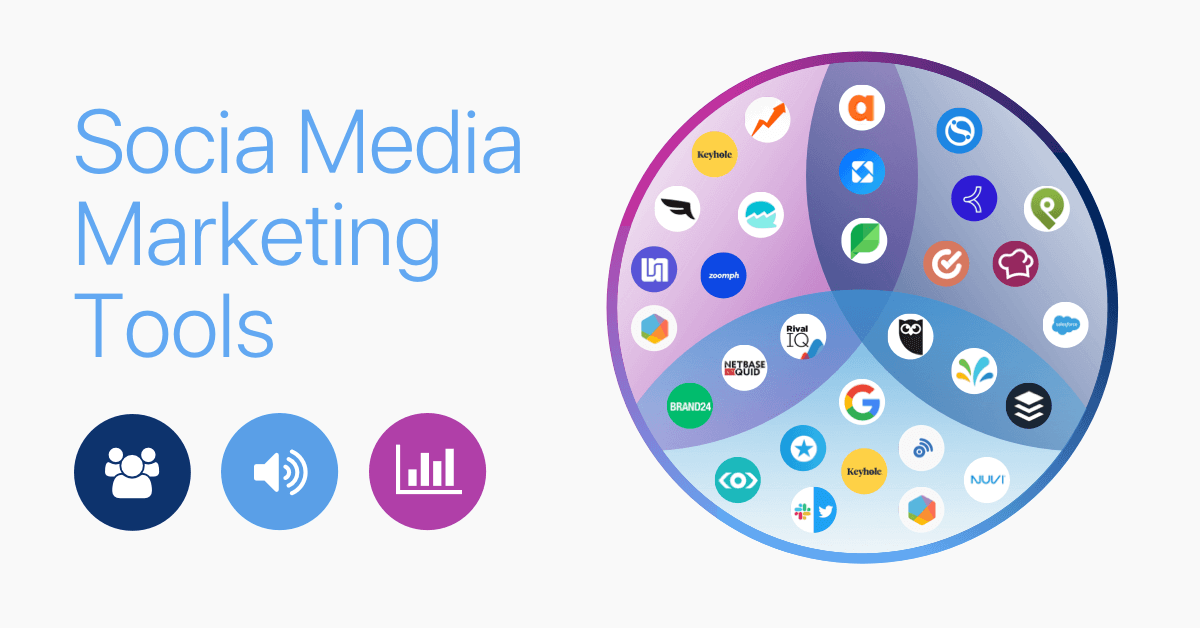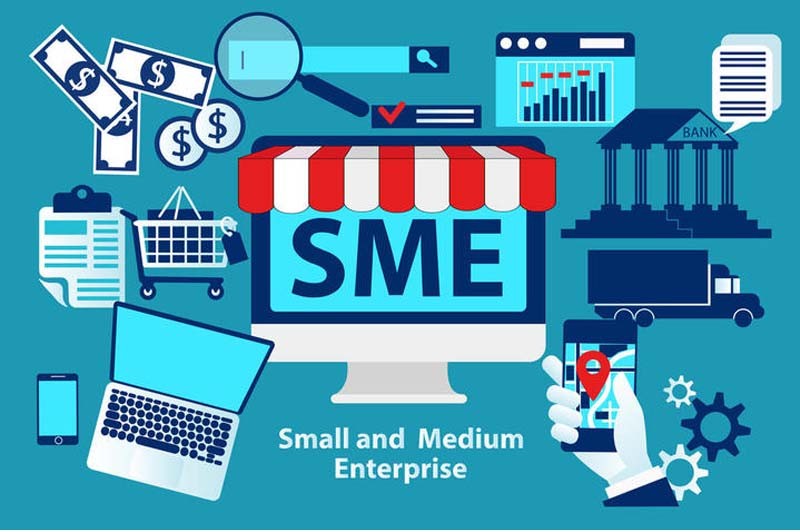Social Media Analytics: Unleashing Growth for Small Businesses
Let’s cut to the chase. You own a small business, and you’ve heard the buzz about social media analytics for small businesses, but what does it really mean for you? It’s the hidden ace up your sleeve for outsmarting the competition and steering your business towards success. Starting with a firm grasp on what’s out there, you’ll learn to track the right metrics and use clever tools to keep tabs on your social media health. Get ready to dive into data, make sense of social signals, and line up your online efforts with your business goals. It’s not rocket science; it’s smarter business, and I’m here to guide you through every step. Buckle up and prepare to transform likes and shares into tangible growth.
Understanding the Landscape of Social Media Analytics for SMEs
The Significance of Metrics and Engagement Tracking
Why does tracking social media metrics matter for your business? It shows what works. It’s much like a coach reviewing game tape; you need to see what happened to plan your next move. Social media metrics give you this power.
How do you know if people like your posts? By tracking likes, shares, and comments. This info points to what content sticks. You see patterns, and you learn what your audience loves. If videos get more likes, make more of them. It’s simple yet powerful.
How can this tracking help grow your business? It lets you make smarter choices. When you track what gets attention, you can do more of that. This means you don’t waste time or money. You get better at being seen and liked, which can mean more sales.
Tools and Platforms for Holistic Social Media Monitoring
What kinds of tools can help you keep an eye on social media interactions? Many! Hootsuite, Buffer, and Sprout Social are just a few. They help you manage and watch over your social media from one place.
How do these tools work? They collect all your social media chatter in one dashboard. You can see comments, likes, and how often people talk about you, all at a glance.
Why not just use the free tools on each platform? Free tools like Facebook Insights are good to start with. They give you the basics. But these full tools show you more. They can tell you when people talk about your brand, even if they don’t tag you.
These tools help you analyze and interpret info. This makes it easier to see how your business is on social media. Then you use what you learn to decide what to post next.
Using these tools is key to understanding social media reports. When you know what the numbers mean, you can make posts that people will enjoy and share. This can lead to more fans, and more people who might buy what you’re selling.
Overall, social media analytics is less of a puzzle when you have the right tools. They provide insight that can drive your company forward. Remember, in the game of social media, knowledge is power. The better you understand the landscape, the more likely you are to win.
Leveraging Data to Fuel Business Growth and Strategy
Interpreting Social Media Reports for Actionable Insights
Knowing what your audience likes is key to growing your small business. I get it, it’s tough out there. You’ve got to stand out. That’s where social media metrics become your best friend. Track likes, shares, and comments with tools for monitoring social interaction. But don’t just collect data; use it! Look at your reports. Ask, what posts got people talking? This tells you more of what to give them.
Now, let’s dig into those reports. Get reports from Instagram analytics tools or Facebook insights for businesses. It’s not just about the numbers. It’s about understanding the story behind them. What made your top post a hit? Was it the time you posted? The cool image? The way you spoke to folks? These clues help you do more of what works.
Measuring social media ROI can seem tough. You ask, how do I know if I’m making money from this? It starts with setting clear goals. What do you want from your social media? More visitors to your shop? More people talking about your products? Once you know that, you can see if you’re hitting those targets.
For making more smart moves, using a social media dashboard is like having a map. It shows you where to go next. You can see trends, like if people love videos more than photos. This helps you spend time and money on stuff that will grow your business.
Aligning Social Media Performance with Business Objectives
Now, let’s make sure what you do online helps your business. Every like or share should get you closer to your goals. This is about linking what you see on social media to what happens in your shop or website. It’s making sure that when people talk about you online, they also buy from you.
When you post online, you’ve got to have a plan. If your goal is to get folks to try a new product, ask yourself, are the online talks leading to sales? This is tracking brand awareness on social media. If more people know you, they may buy from you. That’s good for business.
For each action online, think, what do I want this to do for my shop? It’s about having a tight link between your tweets, your pins, your posts, and what you want to happen—like ringing up sales or getting more sign-ups.
Remember, not every social media platform is the same. What works on Instagram might not on LinkedIn. You have to think about where your customers hang out. Then, be there with the right message. It’s like choosing the right bait for fishing.
Small businesses can make big waves with the right tools and insights from social media. Stay sharp and keep learning what your data is telling you. Then, use that to make moves that turn posts and tweets into profit. It’s all about being smart and using what you learn to grow your shop. Keep at it, and you’ll see more folks walking through your door or hitting that buy button. That’s unleashing growth for your business, one smart social step at a time.
Measuring Impact: The Art of Social Media ROI for SMEs
Evaluating KPIs and Follower Engagement
To measure success, we track follower engagement. What is follower engagement? It’s how much and how often people interact with your content. More likes, shares, and comments mean higher engagement. It shows if your audience finds your content worth their time. For small businesses, engagement can be a direct path to growth. It’s crucial.
Now let’s talk tools. Many tools for monitoring social interaction exist. Facebook Insights and Instagram Analytics tools are great starts. They show who interacts with your page. Plus, they help you see what content works best. Using these tools can help small businesses tailor their posts. Better posts can lead to more engagement.
Still wondering how to track follower engagement? Start simple. Count likes, comments, and shares. Then, compare these numbers over time. That’s your engagement trend. It’s that easy. And it’s very important for your growth.
Let’s dive into measuring social media ROI. ROI stands for return on investment. Here, it means: is the time and money you spend on social media paying off? To figure out ROI: set goals, measure costs, and track results. Are you reaching more customers? Are you making more sales? This tells you if your investment is worth it.
Best Practices in Analyzing and Reporting Social Analytics
Good reporting starts with understanding what to look for in social media reports. Which posts get the most views? Who is sharing your content? This info points you to what’s working. It helps you make better choices for your posts.
Remember, the key benefits of social media insight are learning and improving. Data should lead to decisions that grow your business. For example, if hashtags get you noticed, use them more!
A big part of social media performance evaluation is comparison. How do you stack up against others? Competitive analysis on social platforms can show you. See what similar businesses do well, and what they don’t. Then, adapt their good ideas for your strategy.
Lastly, we must talk about leveraging social data for marketing strategy. Social media can tell you a lot about your customers. It can show what they like and where they are. Use this to make ads that speak to them. This strategy can be more effective and cost less!
In all, remember this. Social media analytics is not just about big numbers. It’s about smart choices. Smart choices help small businesses hit big targets with their posts and ads. You’re not just posting; you’re communicating. Through analytics, you’re listening to the echo back. And that’s how you grow.
Cultivating a Competitive Edge with Advanced Analytics Techniques
Identifying and Executing Cost-Effective Analytic Approaches
Social media gives you tons of info about your fans. You learn what folks like or skip on your page. But, will you use costly tools to analyze this? No, you won’t always need to. Some tools won’t break the bank but still do a top job. These free or cheap tools can still help you keep tabs on essential bits like follower growth, likes, and shares.
For small businesses, it’s not just about the data. It’s about what this all means. Say your new product photo gets tons of likes on Instagram. That’s a clue! People may want to buy it. And if you see lots of chit-chat on a Facebook post, dive in. Ask yourself, what’s buzzing? Maybe you hit the jackpot with a topic, so think of more like it.
Facebook has its own insights for businesses. It tells you what’s working and who’s tuning in. An Instagram tool might show when your fans are online. This means you can pick the right time to post, and more eyes will see it. On Twitter, know which hashtags bring you more friends.
Harnessing Trend Data for Market Positioning and Strategy Development
Understanding trends is key. Let’s talk about how to use trend data. You peek at your numbers and see a surge in visits from a blog post? Good news! Your words stick. Now, you need to find out why and do it again. Write similar posts, or maybe even do a series.
But it’s not just about content. It’s also about timing, style, and your audience’s flavor. For example, if your Pinterest analytics show that DIY crafts are the rage, it’s time to get crafty with your posts. Blend in the trend, but keep it true to your brand.
When you’re sharp on trends, your market strategy gets stronger. You see where you stand compared to others. This isn’t spying; it’s smart business. Knowing what others do lets you tweak your plan, so you stand out.
You track, then adjust. Your dashboard should tell you quick facts about your progress. See a drop in traffic? Act fast. Look at your past moves and fix what’s need fixing. Or, if you see your LinkedIn posts lead to web visits, give it more gas. Double down on what works.
Small businesses own a superpower – adaptability. Big ships turn slow, but your small boat can zip around fast. With the right analytics, you punch above your weight. Put to use what you learn and watch your business grow.
To sum it up: track what you do, learn fast, and use every piece of insight. Use the tools that suit your budget, check the trends, and shape your game plan. Analytics isn’t just numbers; it’s the compass for your business journey on social media.
In our journey through the maze of social media analytics, we’ve covered key topics for small and medium enterprises (SMEs). We started with the importance of tracking metrics and engagement to get a clear view of how your audience interacts with your content. We then explored various tools that help in monitoring your social media presence effectively.
Understanding how to interpret data and align it with your business goals opens doors to strategic growth. We discussed actionable insights from social media reports and how they can steer your business in the right direction.
We also dived into calculating social media’s return on investment (ROI), knowing which key performance indicators (KPIs) matter, and how to gauge follower engagement. Lastly, we touched on advanced analytics techniques to give your business a competitive edge through cost-effective strategies and staying ahead of market trends.
Taking what we’ve learned, you can now turn data into growth fuel for your business. Remember, social media analytics are more than numbers; they tell the story of your brand’s reach, influence, and potential. Use them wisely!
Q&A :
What are social media analytics and why are they important for small businesses?
Social media analytics involve collecting and analyzing data from social media platforms to understand and optimize the online presence of a business. For small businesses, these analytics are essential as they provide insights into consumer behavior, measure the effectiveness of social media strategies, and help in making informed decisions to drive engagement, grow their audience, and increase return on investment.
How can small businesses get started with social media analytics?
To begin with social media analytics, small businesses should first identify their goals and what they want to achieve through social media. They should then choose the right tools and platforms that align with their business needs. It’s important to track relevant metrics such as engagement rates, follower growth, and conversion rates, and regularly review and adjust strategies based on insights gathered from the data.
What are some key metrics small businesses should track in social media analytics?
Key metrics for small businesses to track include engagement (likes, comments, shares), reach (how many people see your posts), traffic (visitors directed to your website from social media), follower growth over time, customer sentiment (positive or negative feedback), and conversion rate (how many interactions lead to a desired action, such as sales or sign-ups).
Can small businesses perform social media analytics without expensive tools?
Yes, small businesses can perform basic social media analytics using native insights provided by the social media platforms themselves, such as Facebook Insights or Twitter Analytics. There are also a variety of free or low-cost third-party tools available that can offer more detailed analytics without a significant investment.
How often should small businesses analyze their social media data?
The frequency of social media data analysis can depend on various factors, such as campaign duration or the pace of the business’s social media activity. Small businesses typically benefit from weekly or monthly analytics reviews, allowing enough time to collect data and see trends, while staying agile enough to respond and adapt strategies quickly as needed.



